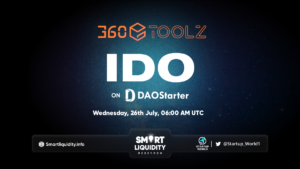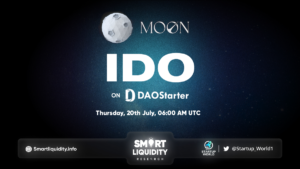Amid a rising dominance of a multi-chain world in the crypto space, the future of decentralized finance (DeFi) has grown to $260 billion. Thus, it makes sense that Symbiosis will cover as many chains as possible.
The Symbiosis team believes bridging all possible networks would finally lead to the most robust and efficient system.
This DeFi project is backed by some leading industry investors, including Blockchain.com, Dragonfly Capital, Spartan, Wave Financial, Republic, Kenetic, BIXIN Ventures, Algorand, Amber, Sybil, KuCoin, GenBlock Capital, and many more.
Multi-chain Liquidity Enabler
Symbiosis is a multi-chain liquidity enabler that aggregates decentralized exchange (DEX) liquidity. The protocol provides liquidity to major blockchains while working as a unified layer for cross-chain communication at the same time.
In 2021, we have seen the rise of layer 2 solutions like Solana, Avalanche, Polygon, and Binance Smart Chain (BSC) that have been giving competition to Ethereum as the total crypto market grows to $2.5 trillion.
As crypto goes multi-chain, moving funds across these growing numbers of chains has become troublesome, costly, and scattered. To remove this friction, Symbiosis aggregates the liquidity and not only across EVM compatible and non-EVM blockchains.
Symbiosis constantly monitors the exchange rates to offer its users the best available rates across multiple chains, which increases the number of crypto pairs available on the platform.
It has further adopted a similar architecture as Ethereum Gas Station Network to eliminate the need for users to hold different assets native to different blockchains to pay for gas fees.
Symbiosis allows users to pay gas fees with the same token used for the swap, as such reducing liquidity fragmentation and further making the process of moving liquidity more cost-effective and less cumbersome.
For participation incentivization, all the community-driven nodes on the relayers’ network have bonded tokens at stake to process swaps. The protocol allows anyone to become a relayer and help secure the network, which ensures the decentralization of the project.
As for security, Symbiosis uses a trustless non-custodial system, which is secured through Threshold Signature Scheme and Multi-Party Signature models.
Growing and Going Mainstream
Recently, Symbiosis had its IDO on crypto exchange Bybit’s launchpad and got a listing on the platform along with Gate.io.
In the first half of December, Symbiosis has already integrated with two of the most prominent blockchains Avalanche and Polygon. Growing at a fast pace, Avalanche has amassed more than $12 billion in assets while Polygon has over $5 billion of total value locked (TVL) in it.
Now, OEC has also joined in. OEC is a one-stop solution for developers looking to create DApps for efficient and seamless on-chain trading of various assets across different blockchains at lower operational costs while enhancing the overall user experience.
OKEx, one of the leading cryptocurrency exchanges, launched the OEC a year back, and it continues to grow its ecosystem of decentralized apps (Dapps) through developments and hackathons.
The OKEx team provides support for R&D, engineering capabilities, and educational resources to assist OEC users and developers.
Earlier this year, it launched two dapps, OKEx Swap and OKEx Farm, on its open-source blockchain that offers its users staking and mining rewards. At the end of the first half of 2021, OKEx also announced the Ethereum Virtual Machine (EVM)-compatibility of OKExChain.
In September, the TVL of OEC jumped from seven to nine figures, at over $672 million. In Q4, the value in the ecosystem has been seeing a decline against the backdrop of the volatile crypto market.
JSwap Finance, the community-driven multi-chain compatible DEX and assets management protocol launched in Q3, is leading the OEC.
The partnership between OEC and Symbiosis is just the beginning, and over time, as the crypto and DeFi market grows and goes mainstream, it would prove more beneficial for both the blockchains.
Let’s get going
To get started, users are to start by connecting the Symbiosis testnet to their MetaMask wallet and select “Rinkeby Testnet” among all the available networks.
From here, choose the asset that you want to swap and specify the amount. In the next step, you just click “Swap” and confirm the transaction on the Metamask wallet, which might take some time to be processed and confirmed.
Once your transaction is confirmed, you can check the transaction activities on the blockchain explorer of that particular asset.

Symbiosis’ integration into the OEC offers a convenient option to swap more assets across chains to the existing users on both sides.
Now that the integration is activated, users can simply go to the testnet and select any coin on the supported networks. The testnet supports a cross-chain swap and liquidity provision module feature.
To make sure, user experience is hassle-free during this testnet phase, the Symbiosis team has performed persisting monitoring of the system for network stability and speed.
📰 INFO
https://medium.com/symbiosis-fi/symbiosis-finance-integrates-with-the-oec-f4b98ca7d095





